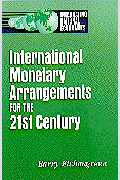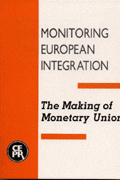Studies in this week’s Hutchins Roundup find that immigrants’ decisions to stay in the U.S. are largely driven by earnings, foreign competition impacts older industries more than younger ones, and more.
Want to receive the Hutchins Roundup as an email? Sign up here to get it in your inbox every Thursday.
Immigrants who experience earnings declines are most likely to return home
Why do immigrants to the United States choose to stay or return to their country of origin? Using new individual-level data from the American Community Survey, Randall Akee of Brookings and the University of California, Los Angeles, and Maggie Jones of the Census Bureau find that almost 40 percent of immigrants return home within 10 years of arriving in the U.S., and that those who return experience income declines in the few years before leaving. In contrast, those who stay see their earnings converge almost entirely to those of similarly skilled native workers within a decade of arrival, implying that success in the U.S. labor market is a significant factor in the decision to stay. In addition, the authors show that stayers and leavers do not differ in terms of initial labor market success but experience different earnings trajectories over time because of unobserved factors—potentially “soft skills” development or job transitions in which workers lose visas.
Foreign competitions hurts most when affected industries are older
The number of workers in manufacturing began declining steadily in 1979, but the decline has been uneven across the country. Katherine Eriksson of the University of California, Davis, and co-authors find that the resilience of local labor markets to foreign competition depends on where local firms are in the product life cycle. Factories that make new and innovative products tend to locate in high-wage, high-education areas and then move to lower-wage, lower-education areas as products mature and the need for high-skilled labor abates. The “China shock” in the 1990s and early 2000s hit industries late in their product cycle, many located in places that already were in economic decline. In contrast, the 1975-85 surge in imports from Japan hit earlier-stage industries in more-educated, economically stronger communities that proved more resilient. The authors say this history offers clues to where and when trade is likely to significantly disrupt local labor markets and, thus, where policies to cushion the blows are most warranted.
Support programs improve outcomes for low-income students
The Pathways to Education program in Toronto offers low-income high school students in public housing free public transportation and college financial aid in exchange for a commitment to attend academic advising, tutoring, and character-building events. Using administrative data, Adam M. Lavecchia of McMaster University, Philip Oreopoulos of the University of Toronto, and Robert S. Brown of the Toronto District School Board find that students assigned to live in public housing developments with Pathways programs had significantly higher college attendance, employment, and earnings outcomes than did students in non-Pathways housing. They estimate that living in a Pathways housing development increased earnings at age 28 by 19 percent and the likelihood of being employed by 10 percent, indicating that comprehensive student support programs have the potential to improve outcomes for years after leaving the program.
Chart of the week: State and local tax revenues have been strong

Quote of the week:
“How does climate affect monetary policy? Monetary policy’s objectives in Australia are full employment/output and inflation. Hence the effect of climate on these variables is an appropriate way to consider the effect of climate change on the economy and the implications for monetary policy. The economy is changing all the time in response to a large number of forces. Monetary policy is always having to analyze and assess these forces and their impact on the economy. But few of these forces have the scale, persistence and systemic risk of climate change,” says Guy Debelle, deputy governor of the Reserve Bank of Australia.
“[C]limate change is a trend rather than cyclical, which makes the assessment much more complicated. What if droughts are more frequent, or cyclones happen more often? The supply shock is no longer temporary but close to permanent. That situation is more challenging to assess and respond to. A relevant question for monetary policy is how quickly and easily the economy adjusts to climate-related shocks, particularly if the shocks are more extreme. Both the impact of the shocks together with the adjustment to those shocks affect the macroeconomic trajectory. The timing and speed of the response by households, businesses and governments is likely to affect the economic outcomes…. Decisions that are taken now can have significant effects on future climate trends and can limit or eliminate the ability to mitigate the effect of those trends.”










Commentary
Hutchins Roundup: Return migration, manufacturing shocks, and more
March 14, 2019